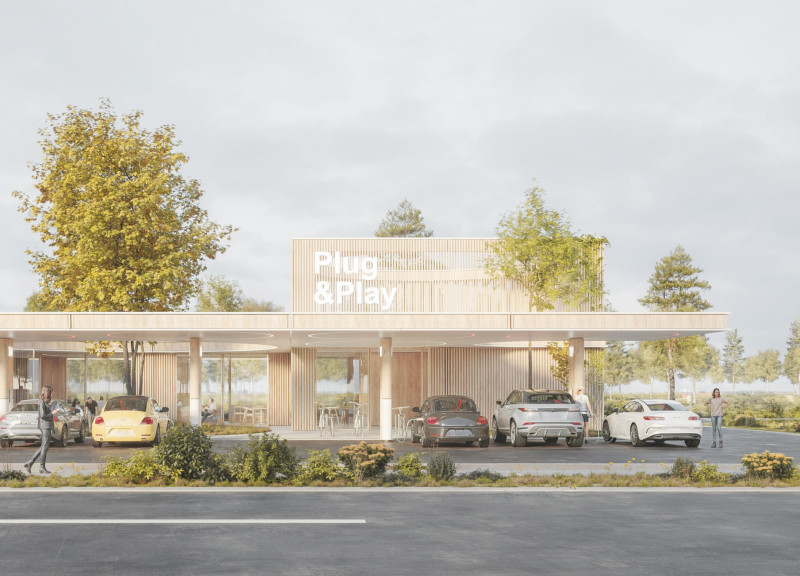5 key facts about this project
At its core, the project represents a harmonious blend of modern design principles and traditional craftsmanship. It showcases a commitment to sustainability through the careful selection of materials, which include reinforced concrete, timber, glass, and steel. These materials are chosen not only for their structural properties but also for their environmental performance. The use of locally sourced timber, for example, reflects an ecological approach that minimizes the project's carbon footprint while supporting local economies. The glass elements facilitate ample natural light, reducing the need for artificial lighting and promoting energy efficiency within the space.
The function of this architectural project is multifaceted, catering to both individual and communal needs. Spaces within the structure are purposefully designed to facilitate various activities, whether they be social gatherings, educational endeavors, or individual reflection. Each area is articulated with a clear understanding of how people will interact with it, promoting a flow that is intuitive and inviting. The layout encourages movement and engagement among users, reinforcing the project's role as a communal hub.
A significant aspect of the design is its responsiveness to the surrounding environment. The building's orientation takes advantage of prevailing winds and sunlight, creating a natural climate control system that enhances comfort. Extensive landscaping complements the architecture, with green roofs and outdoor spaces designed to encourage biodiversity while providing users with areas for relaxation and recreation. The integration of sustainable practices is a recurring theme, with features such as rainwater harvesting and solar panels being incorporated into the architectural framework.
One unique approach evident in the project is its dynamic façade, which serves as both a protective barrier and a visual focal point. This aspect of the design not only enhances the building's identity but also interacts with external conditions. The façade system adjusts to changing light and weather patterns, creating varying degrees of transparency and privacy. This not only contributes to the building's energy efficiency but also reinforces the connection between the interior and exterior environments.
Attention to detail permeates the project's design, as evidenced in the choice of finishes and the careful modulation of space. The interiors are characterized by a balance of open areas and intimate spaces, promoting a sense of community while providing necessary privacy. The design incorporates acoustic considerations, ensuring that spaces are conducive to both collaboration and contemplation. Thoughtful integration of art and culture into the design approach adds further depth, allowing for the expression of local identity and heritage.
In summary, this architectural project embodies a comprehensive understanding of contemporary design principles, focusing on functionality, sustainability, and community engagement. The combination of innovative materials and practices enhances its environmental performance while fulfilling the diverse needs of users. For those interested in delving deeper into the intricacies of this design, a closer examination of architectural plans, sections, and specific design features is encouraged to fully appreciate the thoughtful intentions and outcomes that underpin this project. Exploring these elements will provide a richer understanding of the architectural ideas that led to its realization.























